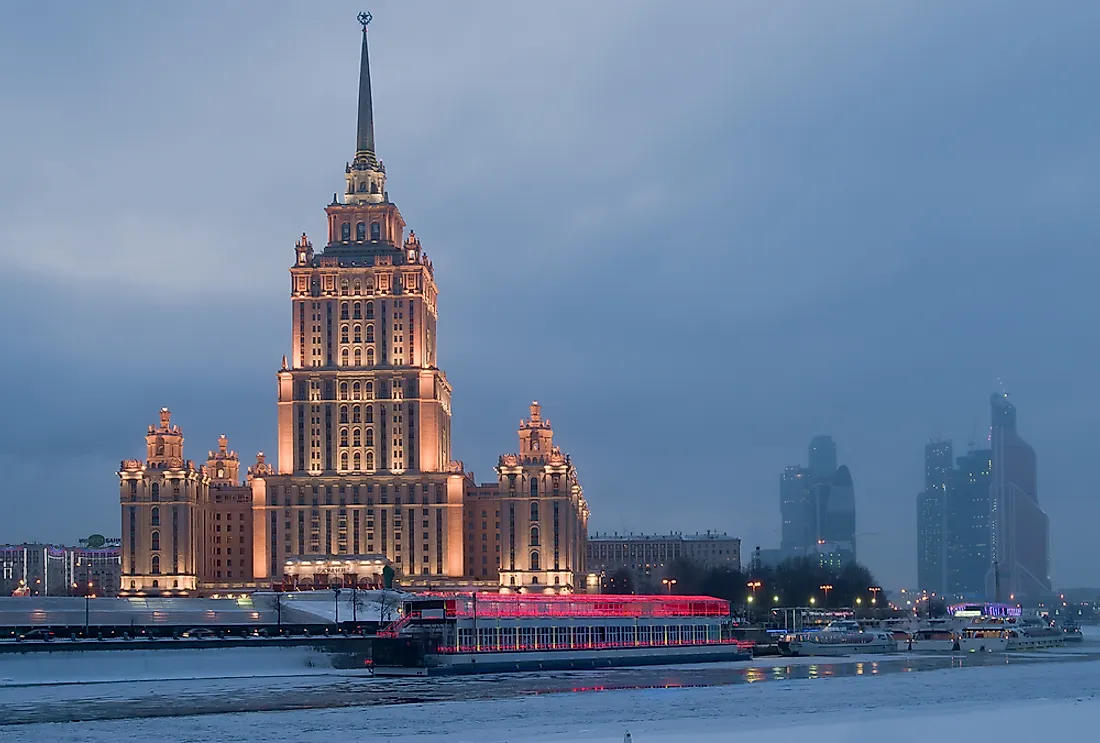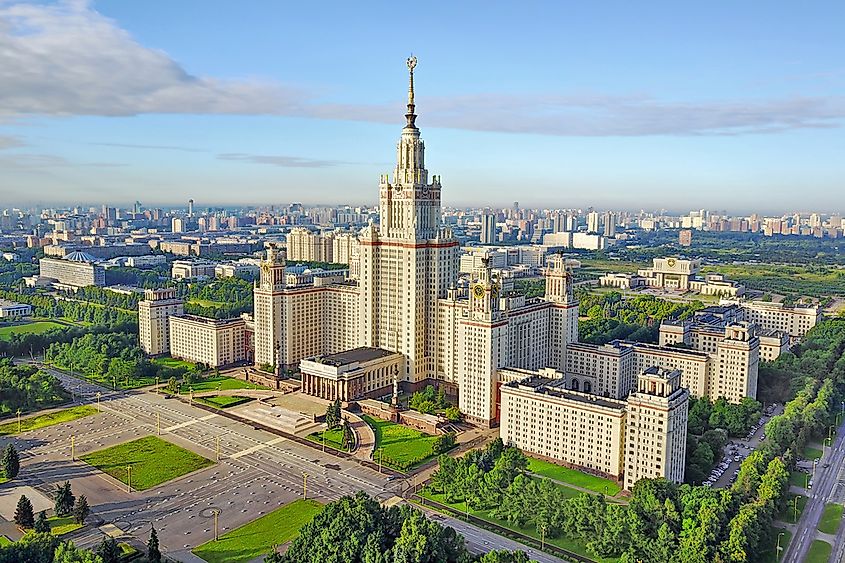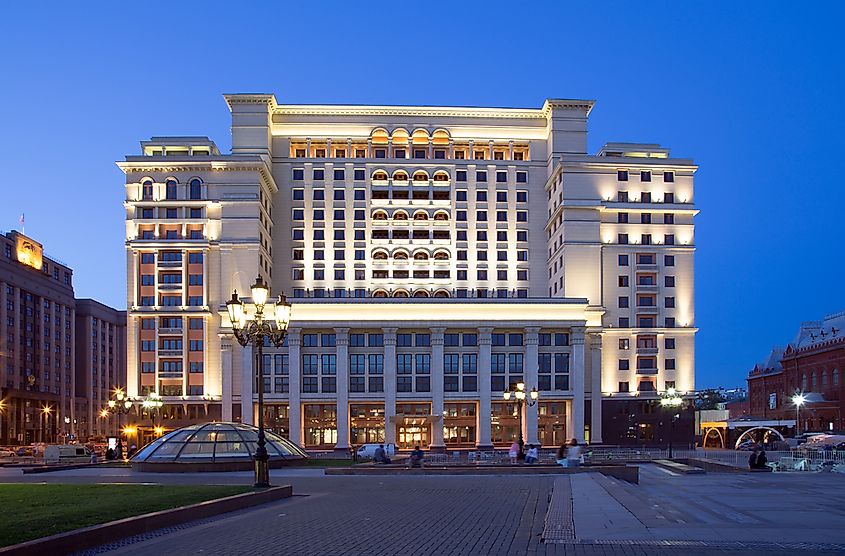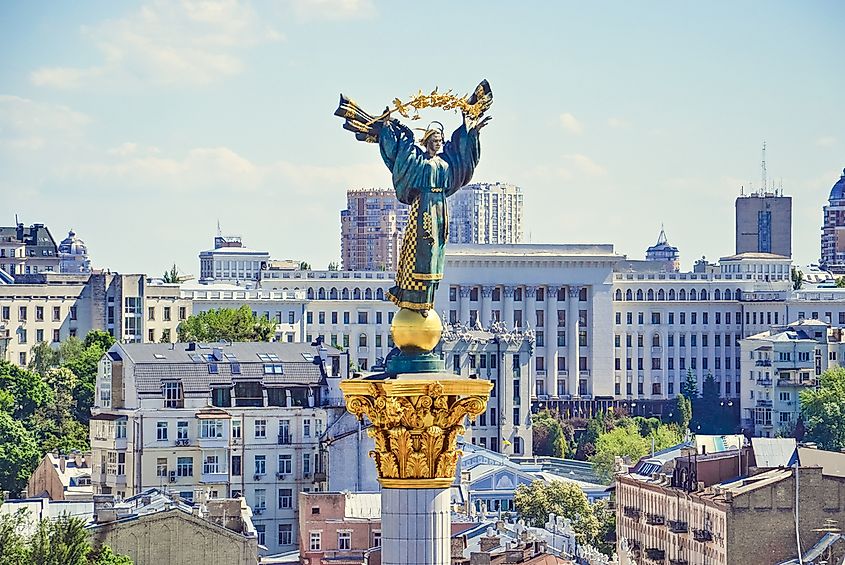What Was Stalinist Architecture?

Stalinist architecture, sometimes called Socialist Classicism or Stalinist Empire style, was a style of architecture used in the construction of buildings during the reign of Josef Stalin in the Soviet Union. Stalinist architecture was especially concentrated in Moscow, and was associated with socialist realism art movement. The main projects were commissioned by the government, such as the Moscow University main building.
The era of this form of architecture lasted only until the reign of Josef Stalin, from 1933 to 1955. Stalin used this period as a time for architectural experimentation as he aimed to commission some of the most ambitious projects of his reign. He tried to impose his own tastes and preferences to the Soviets. He preferred tall imposing skyscrapers that would consolidate a strong image of the Soviet Union. The period of Stalinist architecture proved to be of great success while at the same time some of the projects culminated in failure.
The Birth Of Stalinist Architecture
Josef Stalin became the sole leader of Soviet Russia in the early 1930s and he immediately set his aim of making the Soviet Union an industrialized communist country. To achieve this, he had to make people work very hard to achieve his provocative dream of a communist superpower, especially in the aftermath of the October 1917 revolution. He created a system that was sustained through repression where every element of society was under the control of the state. Architects were also under the regulation of the state. Stalin came up with construction programs that were to be implemented by the architects using prisoners as a labor force. By working for the state, architects lived lavishly and were considered part of the elites of society.
Characteristics And Style Of Stalinist Architecture
Stalin craved to show the might and power of the Soviet Union through rapid industrialization. His main aim was to broadcast to foreign countries of the growth and prosperity of Soviet Russia. To achieve this goal, he needed to construct new buildings that represent his propagandistic image. The architecture was, therefore, an important element in elevating the Soviet Union as a world-leading superpower. In the beginning of the Stalinist era, various architectural styles were experimented with which included classical references such as the use of arches, moldings, and columns with elaborate capitals. During this period, modernity was abandoned in preference for Gothic styles and Russian baroque. Stalinist architecture is well displayed by the Seven Sisters trademark design of a stout base and a crown-like design at the top of the building.

The Seven Sisters buildings include a central spire at the peak of the tallest skyscraper. However, the inclusion of the spire was not in the original building plan and was only included after Stalin’s order. He wanted to set them apart from the skyscrapers that were already being built in the United States. Stalin’s personal taste and preference were gratified by designing the tallest building with a spire at the center.

Urban planning was an important part of the design process, too. Large streets and straight avenues were constructed for military parades and ceremonial functions. This not only reinforced the ideas of Stalinist government but also showcased the glory of the Soviet Union to the outside world. While constructing the buildings, symmetry and large proportions were extensively used in the layout for most buildings. There was a consistent characteristic of all buildings constructed during Stalin’s era regardless of the architect involved. The government was hugely influential in all plans for construction.

Residential constructions were greatly influenced by social class. Buildings for senior officials in government and elite members of the society were built using expensive elements such as balconies, arches, elaborate capitals, and columns. On the other hand, buildings for working class citizens were constructed from simple materials to minimize constructions costs. These buildings lacked ornaments and other elements of luxury and were simple and meant for basic housing needs.
In Conclusion
Stalinist architecture gave importance to form over function. This is well illustrated by the construction of the Soviet Union landmark buildings; Seven Sisters. These high-rise towers incorporated new Gothic references like arches, columns, and verticality. The floors in most of the buildings had little practical use of space. Instead, the emphasis was placed on the form of the building and aesthetic sense. In addition, most of the construction took many years to complete and some were only completed after Stalin’s era and even after his death.











